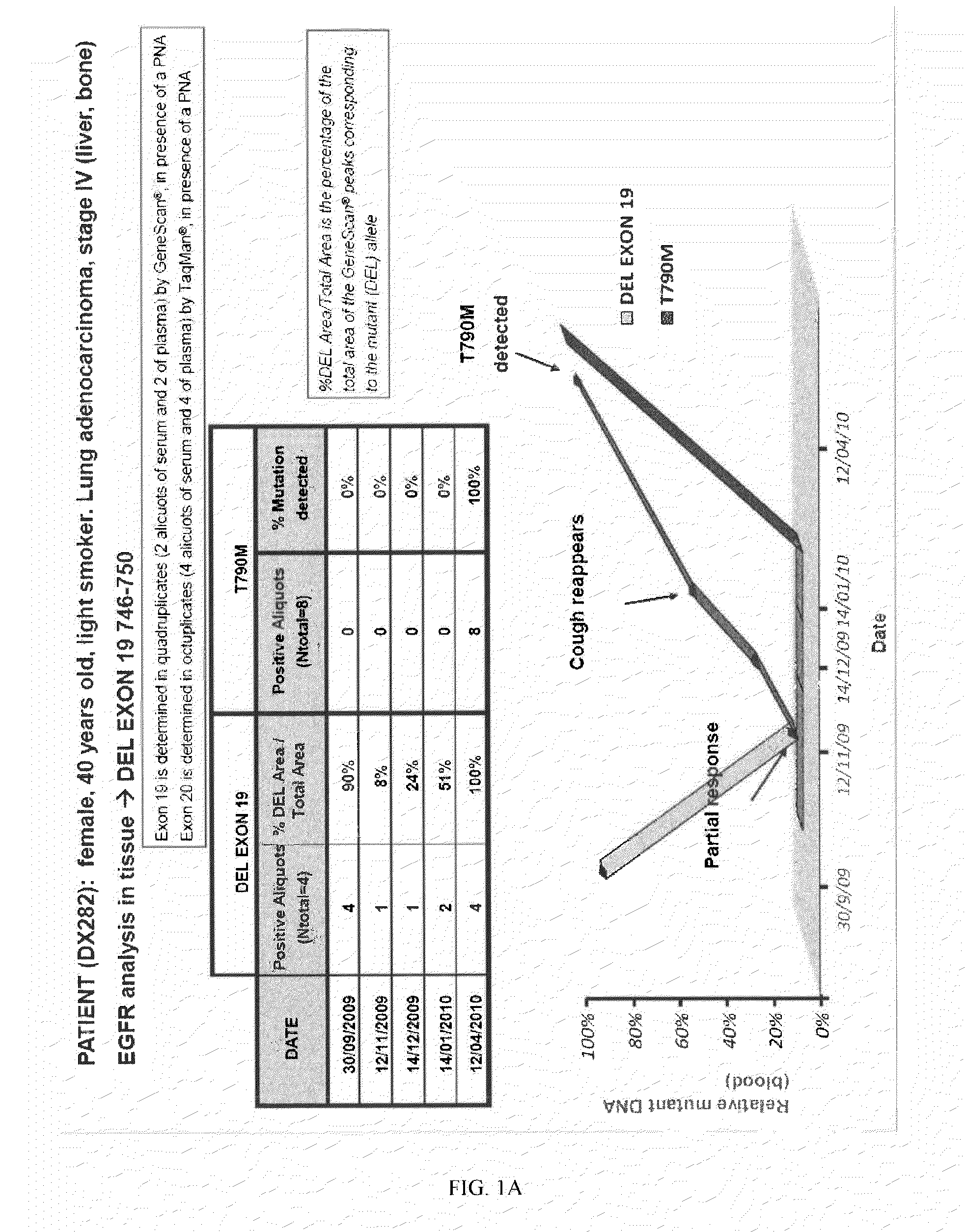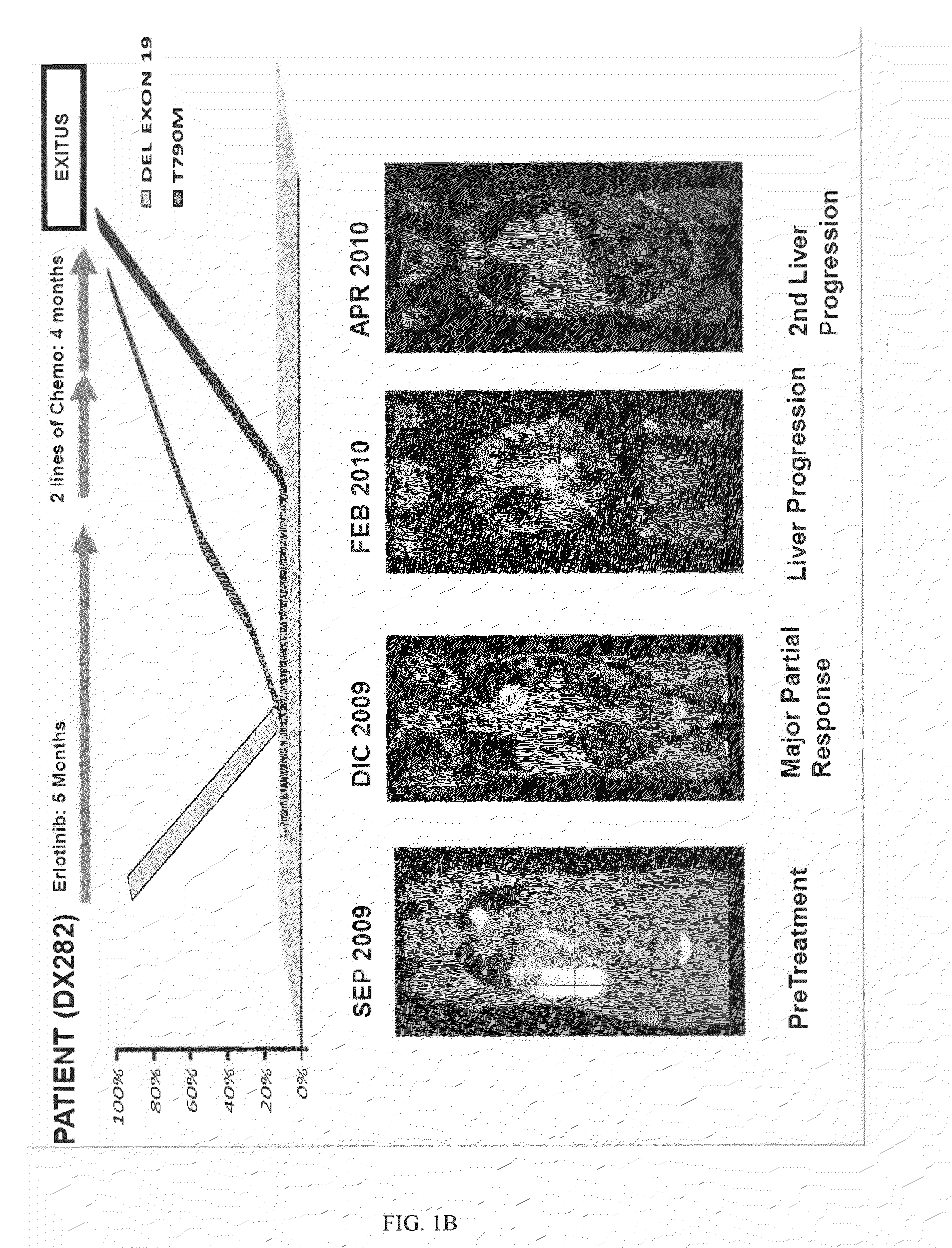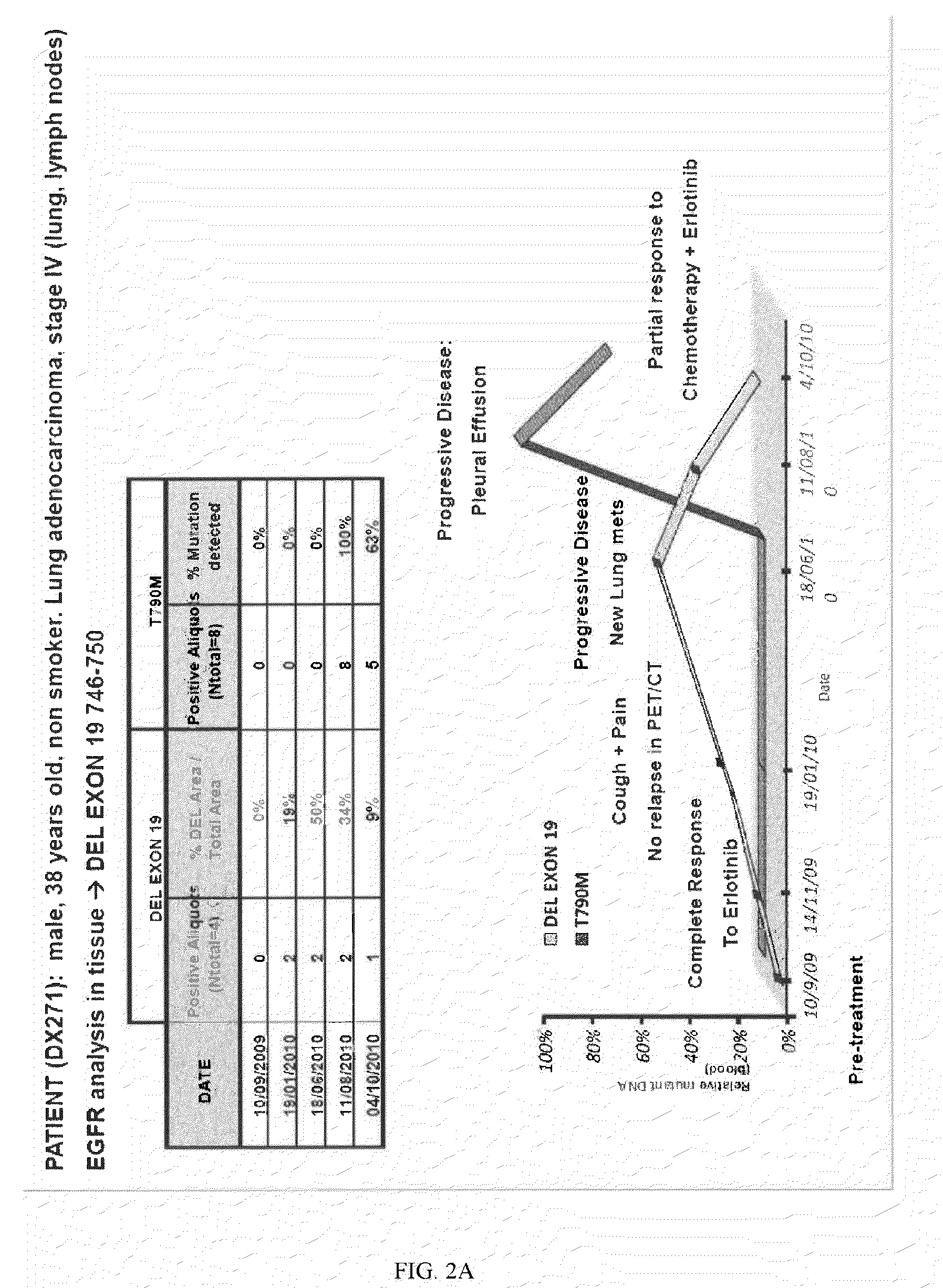Molecular Biomarkers for Predicting Response to Tyrosine Kinase Inhibitors in Lung Cancer
a tyrosine kinase inhibitor and molecular biomarker technology, applied in the field of pharmaceuticals, can solve the problems of patients who initially respond and subsequently relaps
- Summary
- Abstract
- Description
- Claims
- Application Information
AI Technical Summary
Benefits of technology
Problems solved by technology
Method used
Image
Examples
examples
Methods: Monitoring EGFR Mutations in Serum
Blood Samples
[0176]Blood (15 mL) was collected from patients in three Vacutainer tubes (Becton Dickinson, Plymouth, UK), two for serum and one for plasma. Tubes were centrifuged twice at 2300 rpm for 10 min and the supernatant (serum or plasma) aliquoted. DNA was purified from 0.4 mL of serum or plasma by standard procedures, using the QIAamp DNA Blood Mini Kit (Qiagen), and resuspended in 20 μL of water. For each patient, DNA extraction and mutation analysis was performed per quadruplicate in two samples of serum and two samples of plasma. DNA from the cell line PC-9 was used as a mutated control for exon 19, and wild-type control for exons 20 and 21. DNA from the H1975 cell line was used as a wild-type control for exon 19, and mutated control for exons 20 and 21.
Nested Length Analysis of Fluorescently Labelled PCR Products for EGFR Deletions in Exon 19
[0177]For the first PCR, primers were as follows: forward 5′-GTGCATCGCTGGTAACATCC-3′ (SE...
PUM
| Property | Measurement | Unit |
|---|---|---|
| median time | aaaaa | aaaaa |
| median time | aaaaa | aaaaa |
| peak wavelength | aaaaa | aaaaa |
Abstract
Description
Claims
Application Information
 Login to View More
Login to View More - R&D
- Intellectual Property
- Life Sciences
- Materials
- Tech Scout
- Unparalleled Data Quality
- Higher Quality Content
- 60% Fewer Hallucinations
Browse by: Latest US Patents, China's latest patents, Technical Efficacy Thesaurus, Application Domain, Technology Topic, Popular Technical Reports.
© 2025 PatSnap. All rights reserved.Legal|Privacy policy|Modern Slavery Act Transparency Statement|Sitemap|About US| Contact US: help@patsnap.com



